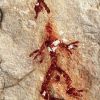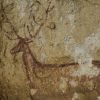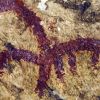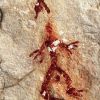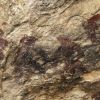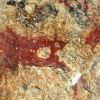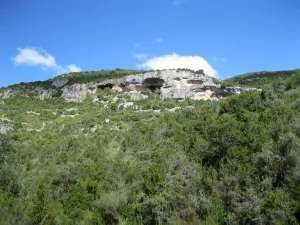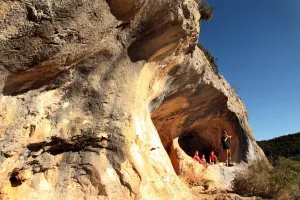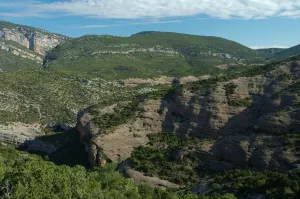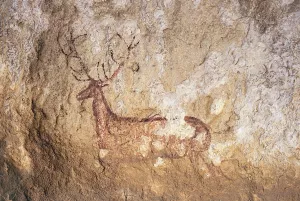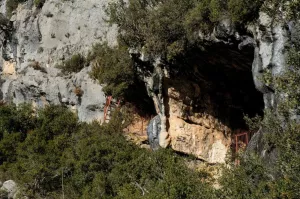The Sierra de Guara and the environment of the River Vero boast an extraordinary group of more than 60 caves with cave art which Arpán, Mallata, Barfaluy and Lecina Superior have guided visits and Chimiachas and Regacens of self-guided.
Do not forget to check the calendar and schedules for the guided visits to shelters with cave paintings. The Cave Art Visitor Centre in Colungo offers information and activities realted to cave art and the societies that created it. It is also the departure point for guided visits of local prehistoric paintings.
The hollows in their deep canyons were chosen by prehistoric people to express their creative genius and their beliefs, through enigmatic representations of animals, human beings and signs painted on the walls. This great rock sanctuary had a magical meaning for groups of hunters from the Palaeolithic era who lived there over 22,000 years ago and its importance continued through the Neolithic and the Bronze Age. All left their mark so it’s possible to see all the classical styles of European Prehistory in a relatively small area close to the River Vero: Palaeolithic, Levantine and Schematic art.
- Palaeolithic Art, a testimony to mankind’s earliest art
The ancient inhabitants of the Cueva del Trucho, the only site in Aragon with Palaeolithic paintings, created naturalistic, suggestive figures swathed in mystery in the semidarkness of the cave; children’s and adult’s hands, horses, dotted lines and signs. The must once have been a great sanctuary, similar to others in the French Pyrenees and on the Cantabrian coast.
- Levantine Art, unique expression in the Mediterranean basin
The Mediterranean mountain ranges of the Iberian Peninsula were the setting for the birth of a new art created by hunters and gatherers after the retreat of the glaciers. Their culture is expressed in small, rocky hollows exposed to the sunlight; hunting and gathering scenes, animals, humans etc., in shelters suchs as Arpán, chimiachas (a) and Muriecho (b).
- Schematic Art, the art of the first farming communities
The Neolithic societies of the Metal Ages accessed remote shelters in order to express their lifestyles and beliefs, with new artistic expression characterised by abstraction. A human figure, animals, undecipherable sings, etc, in shelters such as Mallata (a) and Barfaluy (b) and in other areas within the Guara and La Carrodilla Mountains (c).
In 1998 this universal legacy was declared a World Heritage Site by UNESCO and forms a part of the European Itinerary “Prehistoric Rock Art Trails”.



